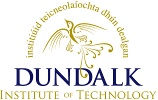Brady, Conor and Barton, Kevin (2010) Towards an Integrated, Multi-method Remote Sensing Strategy for Archaeological Landscape Analysis: the Discovery of the Rossnaree Enclosure, Brú na Bóinne, County Meath, Ireland. In: Aerial Archaeology Research Group annual conference 2010, 15th-19th September, Bucharest, Romania.
Preview |
PDF
Download (5MB) | Preview |
Abstract
Historically for site discovery and delimitation aerial photography, and latterly LiDAR, has been used in the Brú na Bóinne World Heritage Site, an internationally significant archaeological landscape known for its many Neolithic passage tombs and other monuments. The landscape is largely composed of the floodplain and terraces of the River Boyne which are farmed in a combination of pasture crops and tillage for cereals. In the case of Rosnaree, the site was first identified as a large, dense scatter of worked lithics (chipped stone artefacts, primarily flint) in the NE corner of a tillage field (Fig 1A). The lithics suggested intensive activity, possibly involving residential settlement, broadly dating to the Neolithic (4,000-2,500 cal BC). There was no evidence for the site from legacy aerial photography or in a more recent LiDAR survey. Multi-method geophysical and topographical survey (Fig 1B to H) funded by the Heritage Council has revealed the presence of the enclosure which has a complex set of internal features and is likely to be multi-phase. The enclosure is multi-vallate and measures c.110m N-S by at least 160m E-W. Unlike the passage tombs, the Rosnaree site is located on the southern side of the River Boyne, at a highly significant location within the Brú na Bóinne complex. It marks the point at which the river begins to delineate the famous ‘bend’ of Brú na Bóinne and is located directly to the SW and across the River Boyne from the Knowth passage tomb complex. It sits on a hitherto unremarkable low knoll on the first gravel terrace above the river. Because of its close association with the lithic scatter, it appears that the enclosure is likely to date from the Neolithic period. Reviews of the evidence for Neolithic enclosures in Ireland suggest that although there are some similarities to Neolithic enclosure sites identified elsewhere, there are no close parallels. The strategic location of the site, the presence of the animal bone in some quantity as well as a human tooth and a greywacke slab (the preferred stone type used in the construction of many of the passage tombs) all point to a complex set of functions for this site likely to include both a residential habitation element and a more ceremonial element. This is the first site of its kind to be identified in the Brú na Bóinne area and is additionally significant as it positioned on the S side of the River Boyne Investigation of this site potentially addresses some of the key research questions identified in the Brú na Bóinne World Heritage Site Research Framework; developing new and refined methodologies in searching for new sites - in particular those related to settlement, the scale of operation of the monument complex, the changing environment and the significance of the River Boyne itself. What can we learn from lithic scatter, remote sensing and excavation data from this site that can assist us in a larger scale evaluation of the archaeological potential of the Brú na Bóinne World Heritage Site.
| Item Type: | Conference or Workshop Item (Poster) |
|---|---|
| Uncontrolled Keywords: | Archaeology |
| Subjects: | Arts and Humanities > Archaeology Arts and Humanities |
| Research Centres: | Other |
| Depositing User: | Enda Kelly |
| Date Deposited: | 28 Nov 2018 15:57 |
| Last Modified: | 28 Nov 2018 15:57 |
| License: | Creative Commons: Attribution-Noncommercial-Share Alike 4.0 |
| URI: | https://eprints.dkit.ie/id/eprint/618 |
Actions (login required)
 |
View Item |
Downloads
Downloads per month over past year

